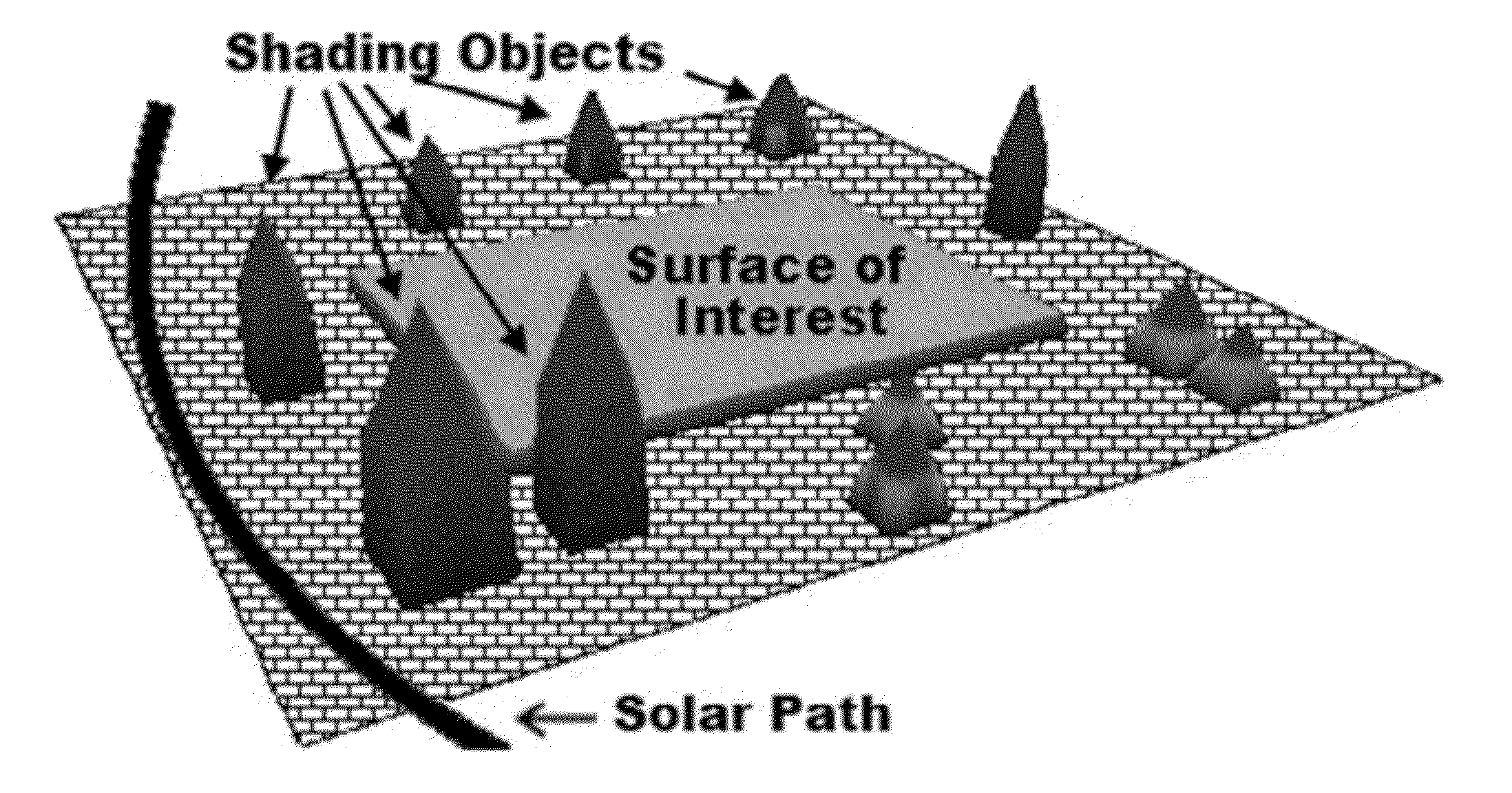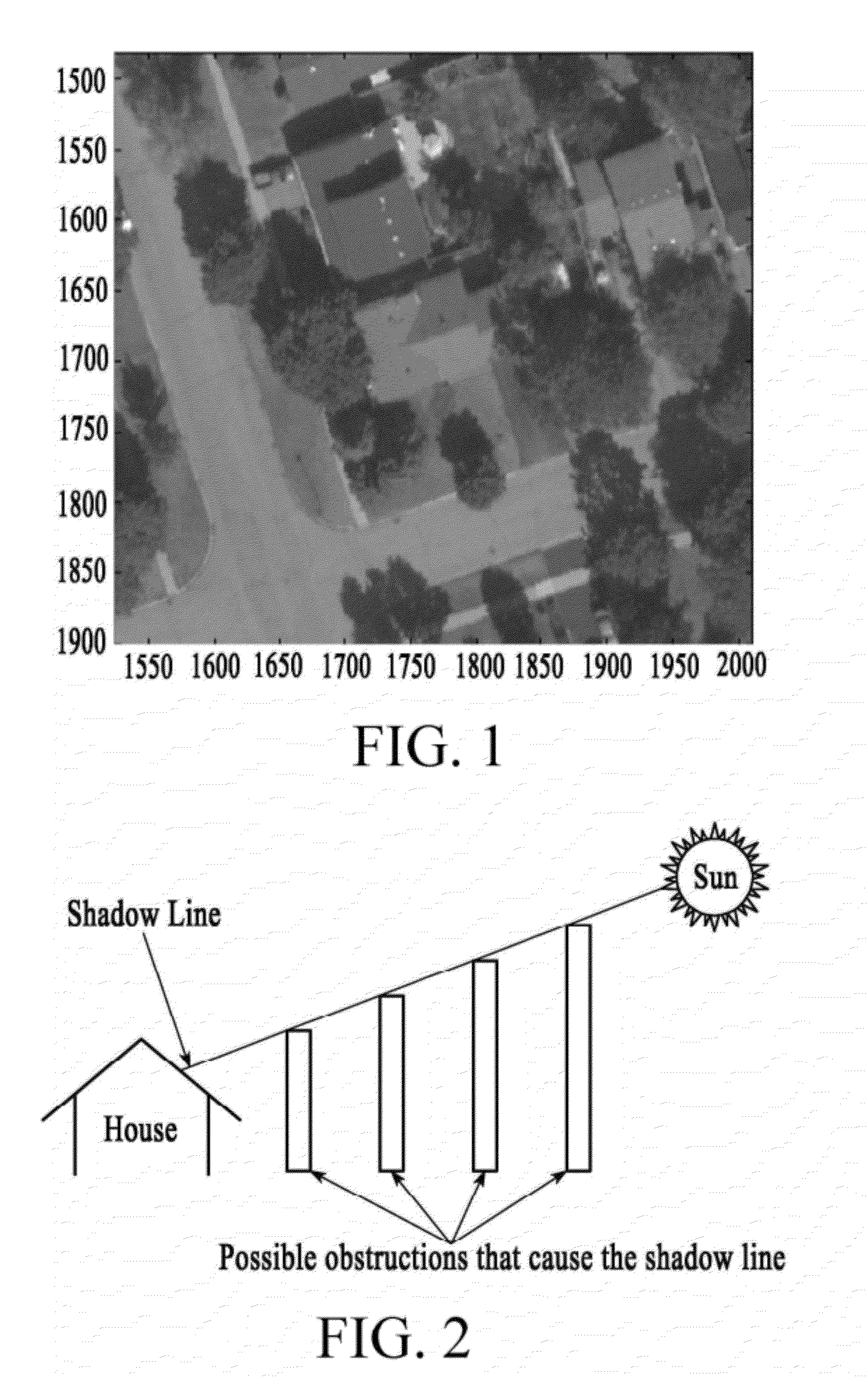Shading analysis software
- Summary
- Abstract
- Description
- Claims
- Application Information
AI Technical Summary
Benefits of technology
Problems solved by technology
Method used
Image
Examples
Embodiment Construction
[0010]In the following description, the term “solar energy system” may be used to refer to a system which converts solar (light) energy into another type of useful energy, such as electricity or heat. Examples of solar energy systems include, but are not limited to, photovoltaics (also referred to in the art as PV) and solar thermal systems. Photovoltaics convert light directly into electricity and are commonly referred to as photovoltaic panels, modules, or cells. Solar shingles may be photovoltaics in a form factor that allows the shingles to be installed with, and perhaps take the appearance of, shingles in a roofing system. Also available are peel-and-stick solar energy collectors that may cover, for example, an individual shingle. Solar thermal systems convert light energy into heat and use the heat for heating, cooling, or generating electricity. These products, and others like them, serve to collect energy from light. The various embodiments of the invention apply equally to ...
PUM
 Login to View More
Login to View More Abstract
Description
Claims
Application Information
 Login to View More
Login to View More - R&D
- Intellectual Property
- Life Sciences
- Materials
- Tech Scout
- Unparalleled Data Quality
- Higher Quality Content
- 60% Fewer Hallucinations
Browse by: Latest US Patents, China's latest patents, Technical Efficacy Thesaurus, Application Domain, Technology Topic, Popular Technical Reports.
© 2025 PatSnap. All rights reserved.Legal|Privacy policy|Modern Slavery Act Transparency Statement|Sitemap|About US| Contact US: help@patsnap.com



